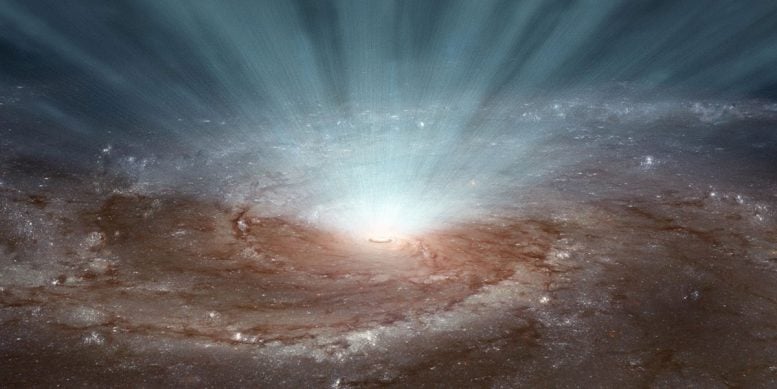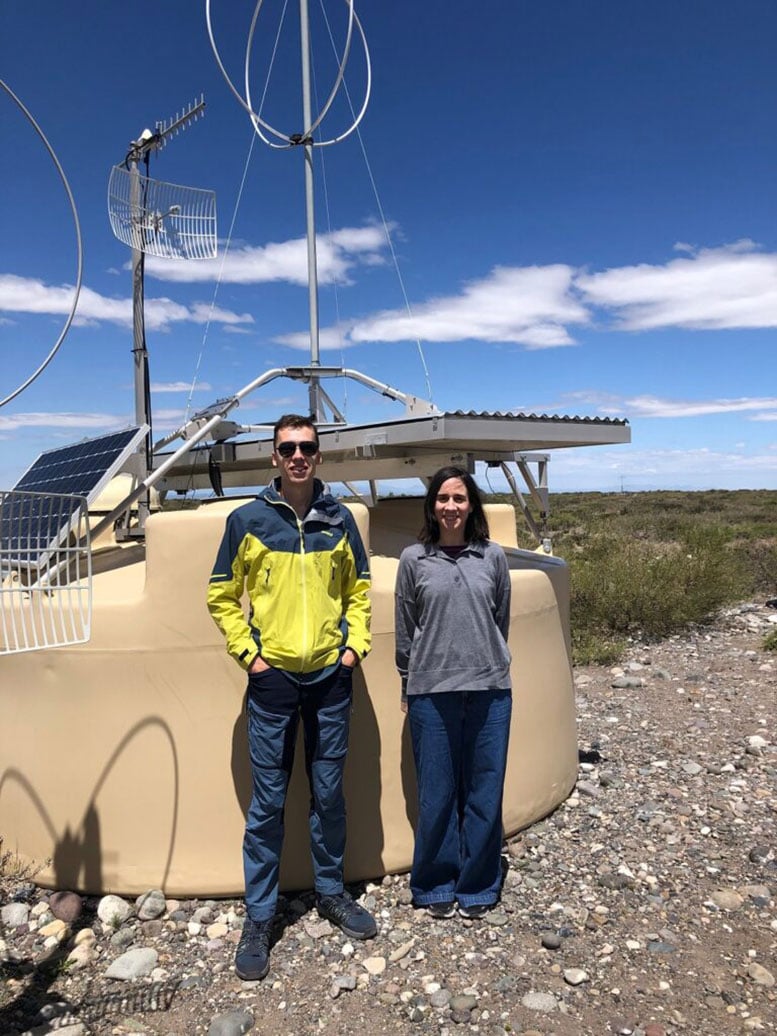
Could black holes help explain the origins of high-energy cosmic radiation?
The universe is filled with many forms of radiation and particles that can be detected here on Earth. Among them are photons, which span the entire electromagnetic spectrum, from the lowest radio waves to the most energetic gamma rays. Other examples include elusive neutrinos and cosmic rays, both of which travel across space at nearly the speed of light.
Interestingly, despite their name, “cosmic rays” are not rays at all. The term stuck for historical reasons, but in reality they are tiny particles, mainly atomic nuclei, that have been propelled to extraordinary energies somewhere in the cosmos. Scientists have long suspected that these particles originate in some of the universe’s most extreme settings, including black holes, exploding stars, or spinning neutron stars (a type of dead star).
Every so often, however, cosmic rays are discovered with far greater energy than usual. These ultra-high-energy particles have puzzled researchers since they were first identified in 1962, and their origins remain a mystery.
A team from the Norwegian University of Science and Technology (NTNU) may now be closer to solving this enduring puzzle in physics.
Supermassive black holes may be the cause
Foteini Oikonomou, an associate professor at NTNU’s Department of Physics, is working on the case. In a recent article, she and her colleagues present a completely new and plausible explanation for this ultra-high-energy radiation.
The lead author is PhD research fellow Domenik Ehlert from the same department. The team also includes postdoctoral fellow Enrico Peretti from the Université Paris Cité. Their work focuses on astroparticle physics, which studies the relationship between the smallest particles in the universe and the universe’s largest phenomena.

“We suspect that this high-energy radiation is created by winds from supermassive black holes,” said Oikonomou.
But what on earth does that mean?
Active black holes create winds
The Milky Way is the neighborhood in the universe where you and I live. Our Sun and solar system are part of this galaxy, along with at least 100 billion other stars.
“There is a black hole called Sagittarius-A* located right in the center of the Milky Way. This black hole is currently in a quiet phase where it isn’t consuming any stars, as there is not enough matter in the vicinity,” Peretti said.
This contrasts with growing, supermassive, active black holes that consume up to several times the mass of our own Sun each year.
“A tiny portion of the material can be pushed away by the force of the black hole before it is pulled in. As a result, around half of these supermassive black holes create winds that move through the universe at up to half the speed of light,” Peretti said.
We have known about these gigantic winds for approximately ten years. The winds from these black holes can affect galaxies. By blowing away gases, they can prevent new stars from forming, for example. This is dramatic enough in itself, but Oikonomou and her colleagues looked at something else, much smaller, that these winds could be the cause of.“
It is possible that these powerful winds accelerate the particles that create the ultra-high-energy radiation,” said Ehlert.
To understand this, we also need to explain a little bit about atoms.
Atoms and enormous amounts of energy
Atoms consist of a nucleus, which is made up of protons and neutrons. These particles are made up of quarks, but we don’t need to go into that right now.
One or more electrons can be found around this nucleus in the so-called cloud.
“The ultra-high-energy radiation consists of protons or atomic nuclei with energy up to 1020 electron volts,” explained Oikonomou.
If that number doesn’t mean anything to you, you should know that in this context, it is an absolutely enormous amount of energy.
“A particle like this, which is smaller than an atom, contains about as much energy as a tennis ball when Serena Williams serves it at 200 kilometers per hour,” said Oikonomou.
It corresponds to approximately a billion times more energy than the particles created by researchers in the Large Hadron Collider in Switzerland and France.
Fortunately, these cosmic rays are destroyed by the Earth’s atmosphere. When they reach ground level, they are as harmless as all the other cosmic radiation that reaches us at the Earth’s surface.
“But for astronauts, cosmic radiation is a very serious problem,” Oikonomou said.
Airline crews don’t need to worry about this because they don’t fly high enough.
“The main concern for astronauts is cosmic low-energy radiation produced by our own Sun, because it is much more common. The rays we study are infrequent enough that it is extremely unlikely they would pass through an astronaut,” she said.
Other suspects
Previously, researchers have looked into whether these high-energy particles come from gamma-ray bursts, from galaxies that are creating new stars at an extremely high rate, or from plasma outflows from supermassive black holes.
However, Oikonomou and her colleagues have another hypothesis.
“All the other hypotheses are very good guesses – they are all sources that contain a lot of energy. But no one has provided evidence that any of them are the source. That is why we decided to investigate the winds from the supermassive black holes,” said Ehlert.
Guilty? Maybe
So what do we actually know? Is it the winds that create the high-energy particles in the cosmic radiation?
“Our answer is more of a cautious ‘maybe’, said Oikonomou.
That doesn’t sound particularly dramatic. However, when researchers ask questions like this, they often feel a sense of excitement and think “YES, that might just be the case!”, but that doesn’t mean it is the case in this instance.
“We find that the conditions related to these winds align particularly well with particle acceleration. But we are still unable to prove that it is specifically these winds that accelerate the particles behind the high-energy cosmic radiation,” Oikonomou said.
However, the model the researchers are using can explain one specific aspect of these particles that we still don’t understand. Within a certain energy range, the particles have a chemical composition that other models cannot explain in any meaningful way.
“We can also test the model using neutrino experiments,” said Oikonomou.
That, however, is something for a completely different article.
“In the years to come, we hope to collaborate with neutrino astronomers to test our hypothesis,” Oikonomou said. Perhaps they will then find more evidence, one way or the other.
Reference: “Ultra-high-energy cosmic rays from ultra-fast outflows of active galactic nuclei” by Domenik Ehlert, Foteini Oikonomou and Enrico Peretti, 19 March 2025, Monthly Notices of the Royal Astronomical Society.
DOI: 10.1093/mnras/staf457
Never miss a breakthrough: Join the SciTechDaily newsletter.
Follow us on Google and Google News.
1 Comment
With a name like Foteini I don’t think arguing the existence of Photons will get much mileage. Maybe if I point out that Photons are a descriptor of energy. But then these curious ape people think in numbers. They picture what they see as things and so, like to count. The fluid nature of ‘things’ means there are no numbers of the same quality, neither length, nor time nor content save for the imaginations.
But that doesn’t seem to make a dent.